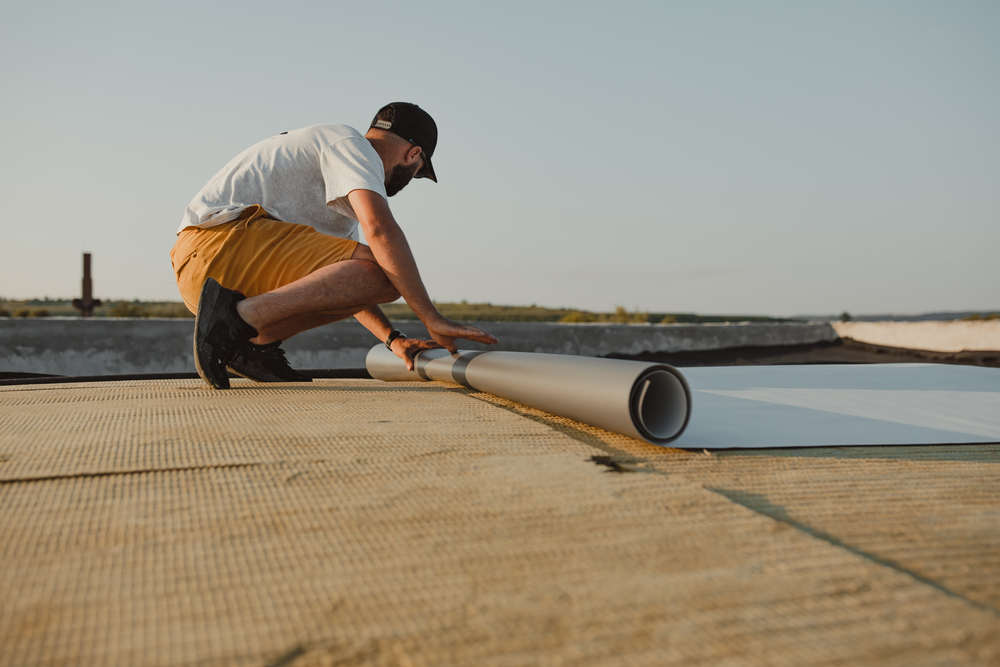
Can PVC Roofing be Installed Over Existing Roofing Materials?
August 9, 2024 4:09 pm Leave your thoughtsWhen it comes to roofing solutions, one material that has been gaining popularity is PVC (Polyvinyl Chloride) roofing. Known for its durability and versatility, PVC roofing can be a great choice for many applications. However, a common question that arises is whether PVC roofing can be installed over existing roofing materials. In this article, we’ll explore this question in detail and examine the benefits of PVC roofing.
What is PVC Roofing?
PVC roofing is a type of single-ply roofing membrane made from polyvinyl chloride. It is widely used in commercial and residential roofing applications due to its resistance to various environmental factors, including UV rays, chemicals, and moisture. PVC roofing is known for its flexibility, durability, and ease of installation, making it a preferred choice for many property owners.
Can PVC Roofing Be Installed Over Existing Roofing Materials?
The short answer is yes, PVC roofing can be installed over existing roofing materials. However, several factors need to be considered to ensure a successful installation.
Assessing the Condition of the Existing Roof
Before proceeding with the installation of PVC roofing over existing materials, it is crucial to assess the condition of the existing roof. The underlying roof must be in good condition to support the new PVC layer. Any significant damage, such as large cracks or leaks, should be repaired before installation. The surface should be clean, dry, and free of debris to ensure proper adhesion of the PVC roofing material.
Roof Structure and Weight Considerations
Installing PVC roofing over existing materials adds an additional layer to the roof, which can affect the overall weight and structural integrity of the roof. It is essential to ensure that the existing roof structure can handle the added weight. Consulting with a roofing professional can help determine if additional reinforcement is needed to support the new roofing layer.
Compatibility of Roofing Materials
The type of existing roofing material can influence whether PVC roofing can be installed over it. PVC roofing is generally compatible with various roofing materials, including asphalt shingles, metal roofing, and modified bitumen. However, some materials may require specific preparation or a compatible primer to ensure proper adhesion. For instance, if the existing roof is made of gravel or a heavily textured surface, a layer of insulation or a primer may be required to create a smooth surface for the PVC roofing.
Benefits of PVC Roofing
Installing PVC roofing offers several benefits, making it an attractive option for many property owners. Here are some of the key advantages:
Durability and Longevity
PVC roofing is highly durable and can withstand extreme weather conditions, including heavy rain, strong winds, and intense sunlight. It has a long lifespan, often lasting 20 to 30 years with proper maintenance. The material is also resistant to punctures, tears, and impacts, ensuring long-term protection for the building.
Energy Efficiency
One of the standout features of PVC roofing is its energy efficiency. The reflective properties of PVC roofing help to reduce heat absorption, which can lower cooling costs during hot weather. This reflective quality contributes to a more energy-efficient building and can result in significant savings on energy bills.
Low Maintenance
PVC roofing requires minimal maintenance compared to other roofing materials. Its smooth, non-porous surface makes it easy to clean and resistant to mold, algae, and mildew. Regular inspections and basic cleaning are typically sufficient to keep PVC roofing in good condition.
Environmentally Friendly
PVC roofing is a sustainable option as it can be recycled at the end of its lifespan. Additionally, the reflective nature of PVC roofing helps to reduce the urban heat island effect, contributing to a cooler environment. Many manufacturers also produce PVC roofing with environmentally friendly processes and materials.
Easy Installation
The installation process for PVC roofing is relatively straightforward, especially when installed over existing materials. PVC roofing membranes are usually installed using mechanical fasteners, adhesive, or a combination of both. The material’s flexibility allows it to conform to various roof shapes and surfaces, making it suitable for a wide range of applications.
Conclusion
PVC roofing can indeed be installed over existing roofing materials, provided that certain conditions are met. Proper assessment of the existing roof, consideration of structural implications, and compatibility with existing materials are essential factors to ensure a successful installation. The benefits of PVC roofing, including its durability, energy efficiency, low maintenance requirements, and environmental friendliness, make it a compelling choice for many property owners.
Need a Roofing Company in Springfield, MA?
Since 1987, R & H Roofing has remained one of the most trusted names in the roofing industry. We specialize in commercial and industrial roofing and offer a wide variety of roofing systems including EPDM systems, TPO Systems, Metal Roofing Systems, BUR Tar & Gravel Systems, Asphalt Shingles, and PVC Systems. We also work with some of the leading manufacturers including Firestone, Carlisle, Duro-last, and Garland. Contact us today to learn more about what we can do for you!
Categorised in: PVC Roofing
This post was written by admin
